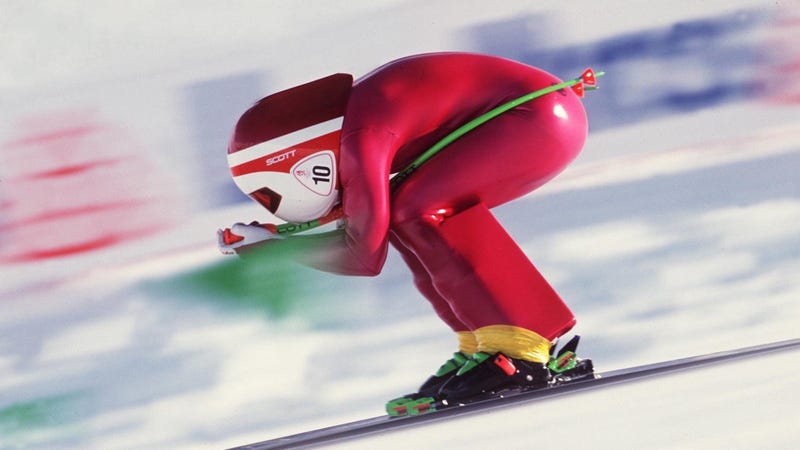As a new Freshman at his first HS ski academy "get together", I was told by a bunch of upperclassmen to shave my eyebrows so they would not obstruct my view at my first speed camp. They were even kind enough to help me do it. I ended up being the only one on the entire team that went for the hard core ski racer look ... that night.
Re: Tuck Drill - The tuck drill is an excellent drill that teaches a number of great things. First, it locks the upper body into a position that provides itself as an excellent example/sample of skiing with a very quiet upper body and transferring absorption capacity from the neck, shoulders and spine to the hips, knees, and ankles. Secondly, it teaches separation between the upper and lower, ultimately the CoM and BoS, by mechanically isolating one from the other. Third, it teaches us to execute turning through forced activation of lower body movements such as femur rotation but especially the feet and ankles in the form of dorsiflexion, plantar flexion, inversion and eversion. Finally, it teaches rotary separation as it clearly defines the difference between the pole direction of the tuck from the direction of the skis allowing the skier to easily sample different rates of rotary as well as to better determine the difference between the ski motored rotary of the femurs and the skier motored rotary from pelvic twist. A good difficulty modification for an easier version is simply using a tall tuck and shallow turn before getting progressively lower and turnier with increasing comfort level. The hardest version is what I refer to as is the speed skater tuck drill where the subject keeps their hands behind their back and relying ever more on the lower regions of the body for both movement and balance.

